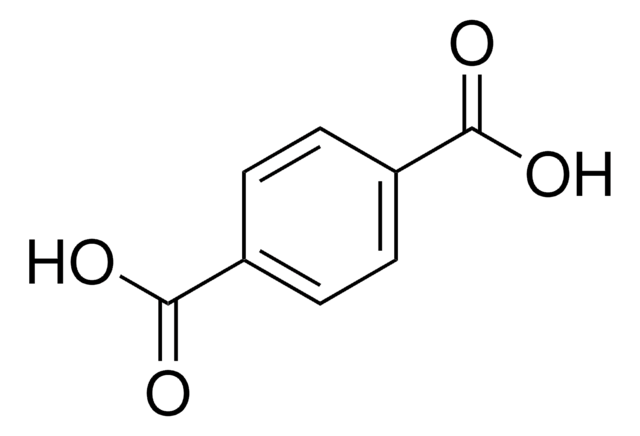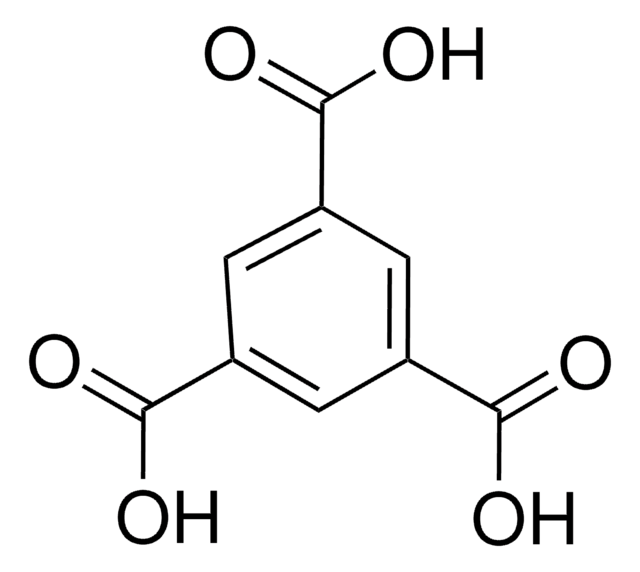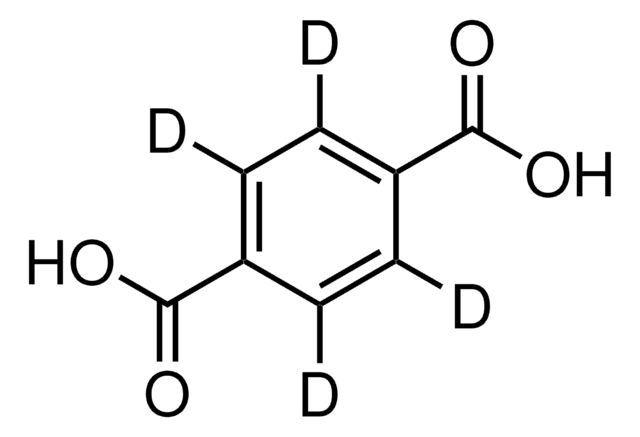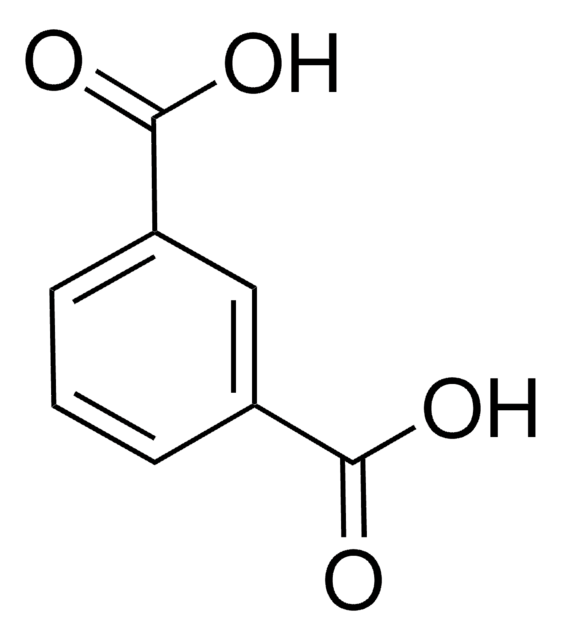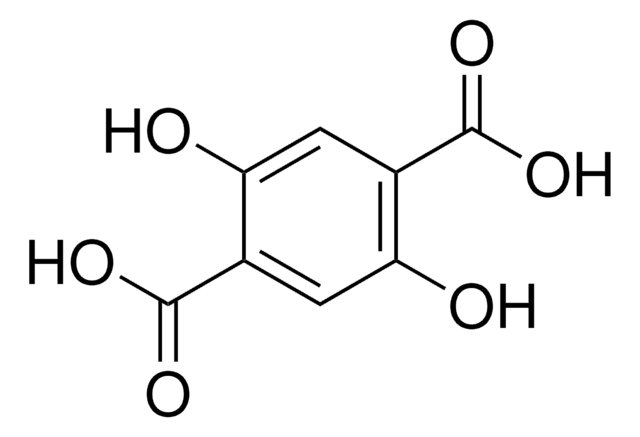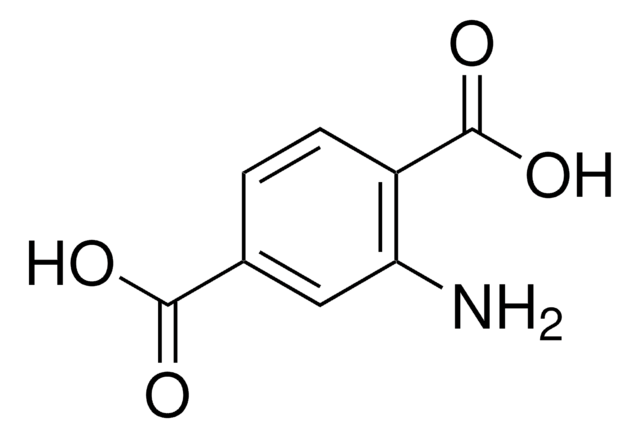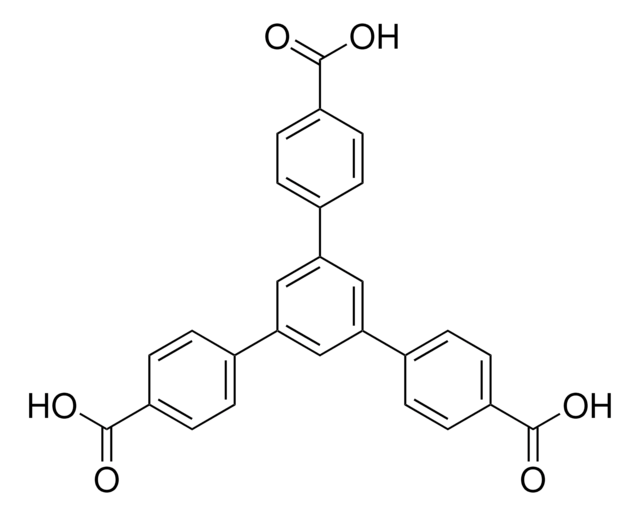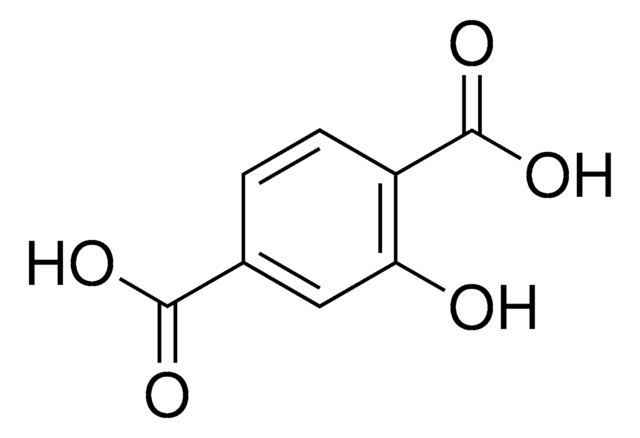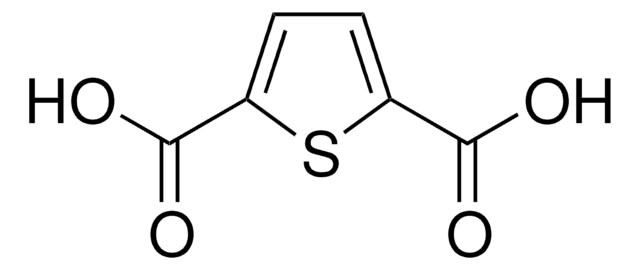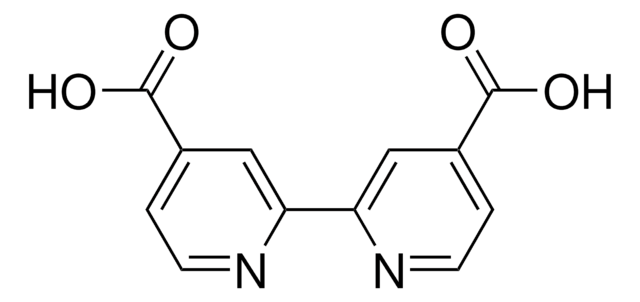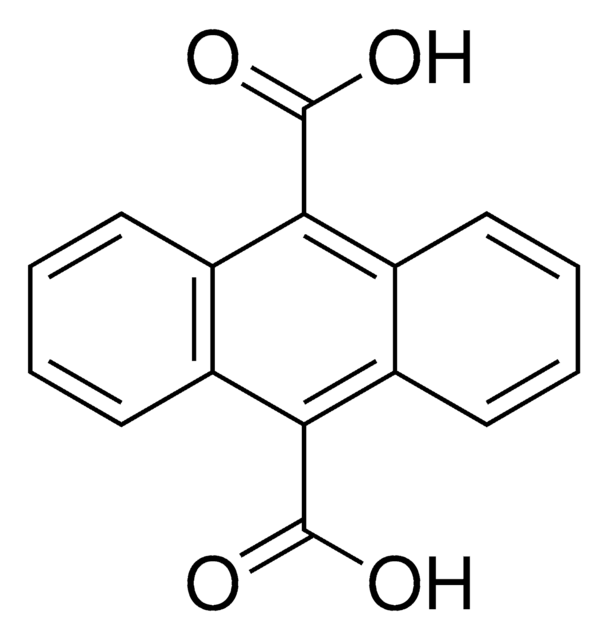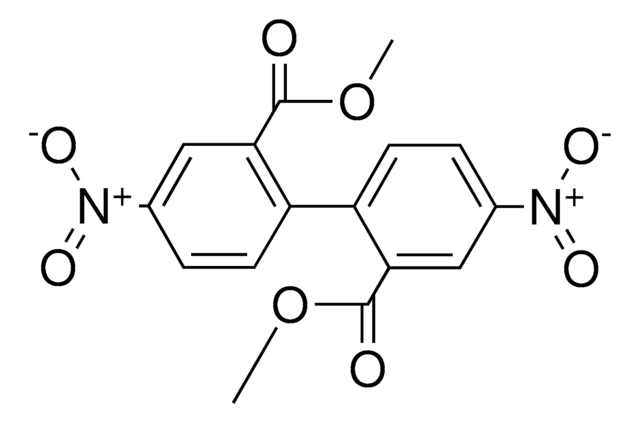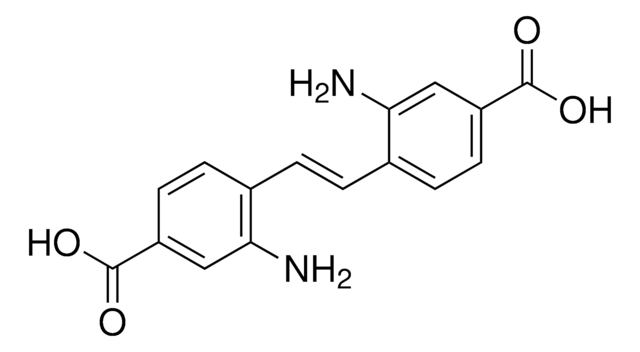225266
Biphenyl-4,4′-dicarboxylic acid
97%
Sinónimos:
4-(4-propan-2-yloxycarbonylphenyl)benzoic Acid
About This Item
Productos recomendados
Nivel de calidad
Análisis
97%
mp
>300 °C (lit.)
cadena SMILES
OC(=O)c1ccc(cc1)-c2ccc(cc2)C(O)=O
InChI
1S/C14H10O4/c15-13(16)11-5-1-9(2-6-11)10-3-7-12(8-4-10)14(17)18/h1-8H,(H,15,16)(H,17,18)
Clave InChI
NEQFBGHQPUXOFH-UHFFFAOYSA-N
¿Está buscando productos similares? Visita Guía de comparación de productos
Categorías relacionadas
Descripción general
Aplicación
- As a key component In the synthesis of nematic aromatic polyesters which are valuable in the development of liquid crystal polymers with potential applications in electronics, optical devices automotive, and textiles.
- As a linker or ligand in the synthesis of metal-organic frameworks (MOFs) for a wide range of potential applications in areas such as gas storage, catalysis, sensing, and separation technology.
- As a building block in biomedical applications for the synthesis of various pharmaceutical compounds and materials with biological activity. It can also be utilized in the development of drug delivery systems and biomaterials due to its chemical properties.
Palabra de señalización
Warning
Frases de peligro
Consejos de prudencia
Clasificaciones de peligro
Eye Irrit. 2 - Skin Irrit. 2 - STOT SE 3
Órganos de actuación
Respiratory system
Código de clase de almacenamiento
11 - Combustible Solids
Clase de riesgo para el agua (WGK)
WGK 3
Punto de inflamabilidad (°F)
Not applicable
Punto de inflamabilidad (°C)
Not applicable
Equipo de protección personal
dust mask type N95 (US), Eyeshields, Gloves
Elija entre una de las versiones más recientes:
¿Ya tiene este producto?
Encuentre la documentación para los productos que ha comprado recientemente en la Biblioteca de documentos.
Los clientes también vieron
Nuestro equipo de científicos tiene experiencia en todas las áreas de investigación: Ciencias de la vida, Ciencia de los materiales, Síntesis química, Cromatografía, Analítica y muchas otras.
Póngase en contacto con el Servicio técnico